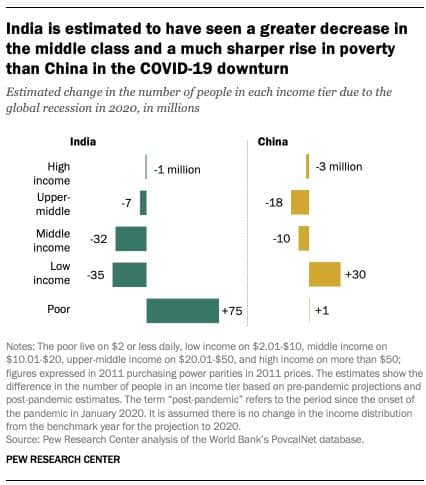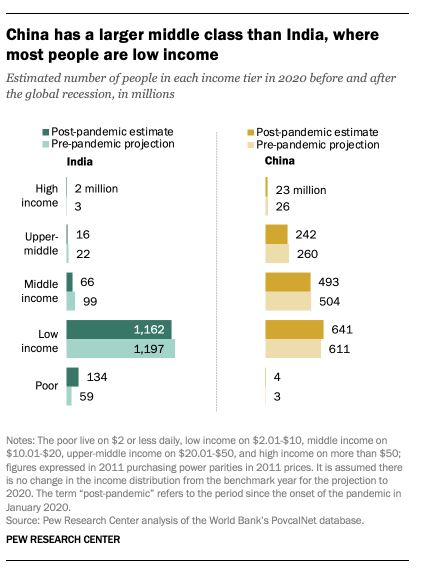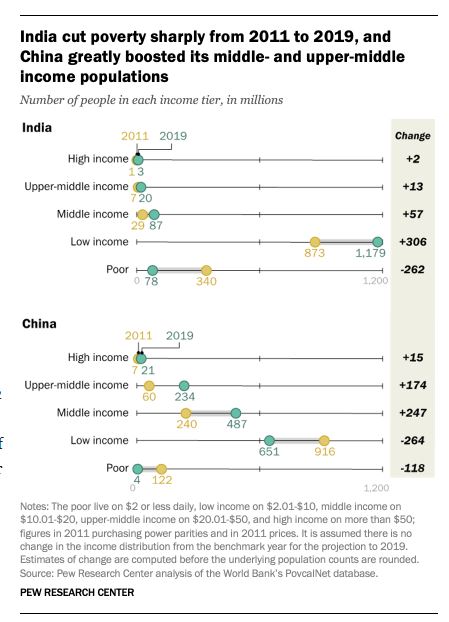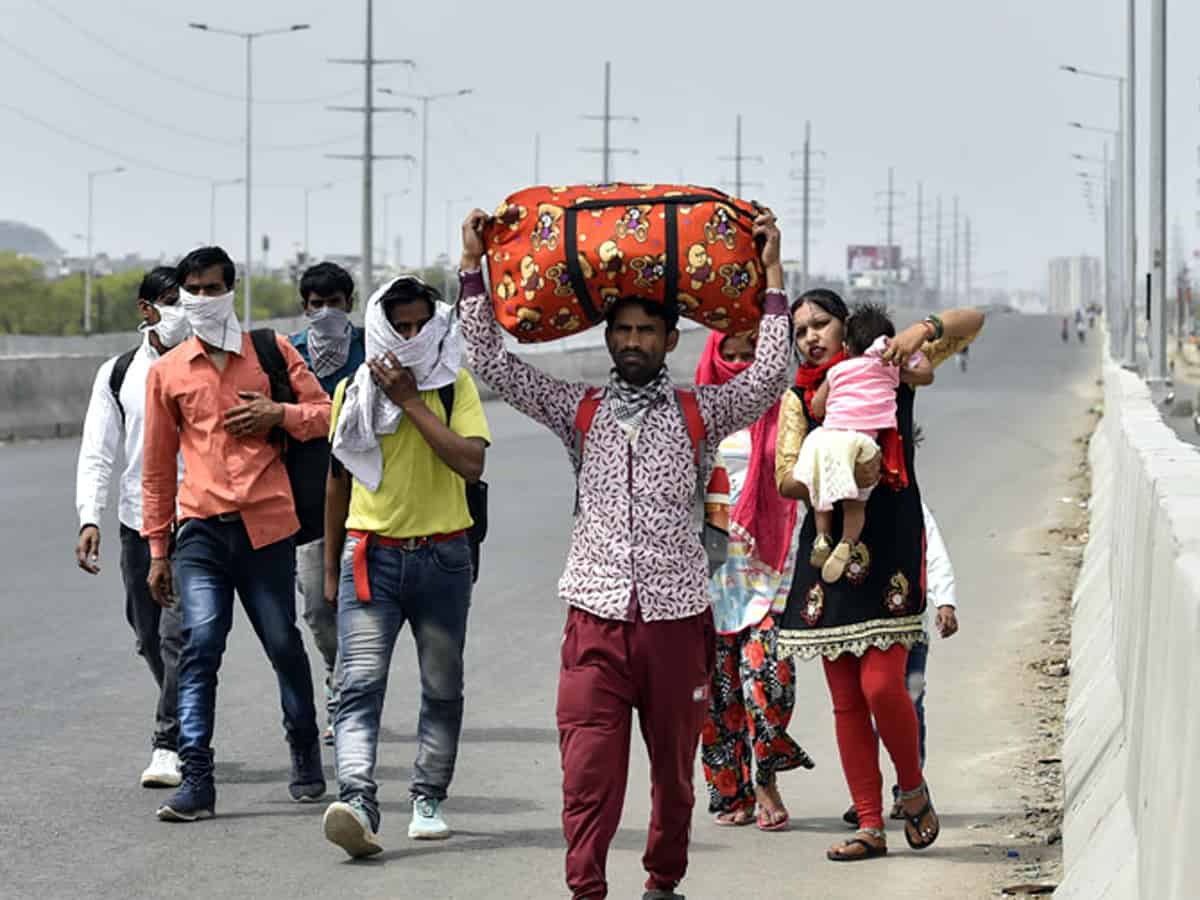New Delhi: The unprecedented coronavirus pandemic in 2020 has led to a major economic crisis especially in India, pushing millions of people from the middle class into poverty, revealed a study by Pew research centre.
The report, released on Thursday, uses World Bank projections of economic growth to estimate the impact of COVID-19 on Indian incomes. The lockdown triggered by the pandemic resulted in shut businesses, lost jobs and falling incomes, plunging the Indian economy into a deep recession.

The number of Indians in the middle class, or those earning between $10 and $20 (Rs700- Rs1,400) a day, shrunk by about 32 million, compared with the number that could have been reached in the absence of a pandemic, the study said.
The analysis also revealed that while India plunged into a deep recession in 2020, China was able to forestall a contraction.
The World Bank’s economic forecasts in January 2020 stated that India and China almost had the same level of growth with 5.8 and 5.9 per cent GDP respectively.
However, nearly a year into the pandemic, the World Bank revised its forecast this January, to a contraction of 9.6 per cent for India and growth of 2 per cent for China.

Prior to the pandemic, it was anticipated that 99 million people in India would belong in the global middle class in 2020. A year into the pandemic, this number is estimated to be have been 66 million, cut by a third, the study said.
Most people in India were in the global low-income tier in 2020. Some 1.20 billion people in India were expected to be in this tier in 2020 prior to the pandemic, accounting for 30% of the world’s low-income population.

In China, however, the fall in the living standards have been modest and there are more people in the global middle- and upper-middle income tiers than in poverty and the low-income tier.
“The methodology in this analysis assumes that incomes change at the same rate for all people,” the study explained. “If the COVID-19 recession has worsened inequality, the increase in the number of poor is likely greater than estimated in this analysis, and the decrease in the number who are high income is likely less than estimated. The middle class may have shrunk by more than projected,” it added.

